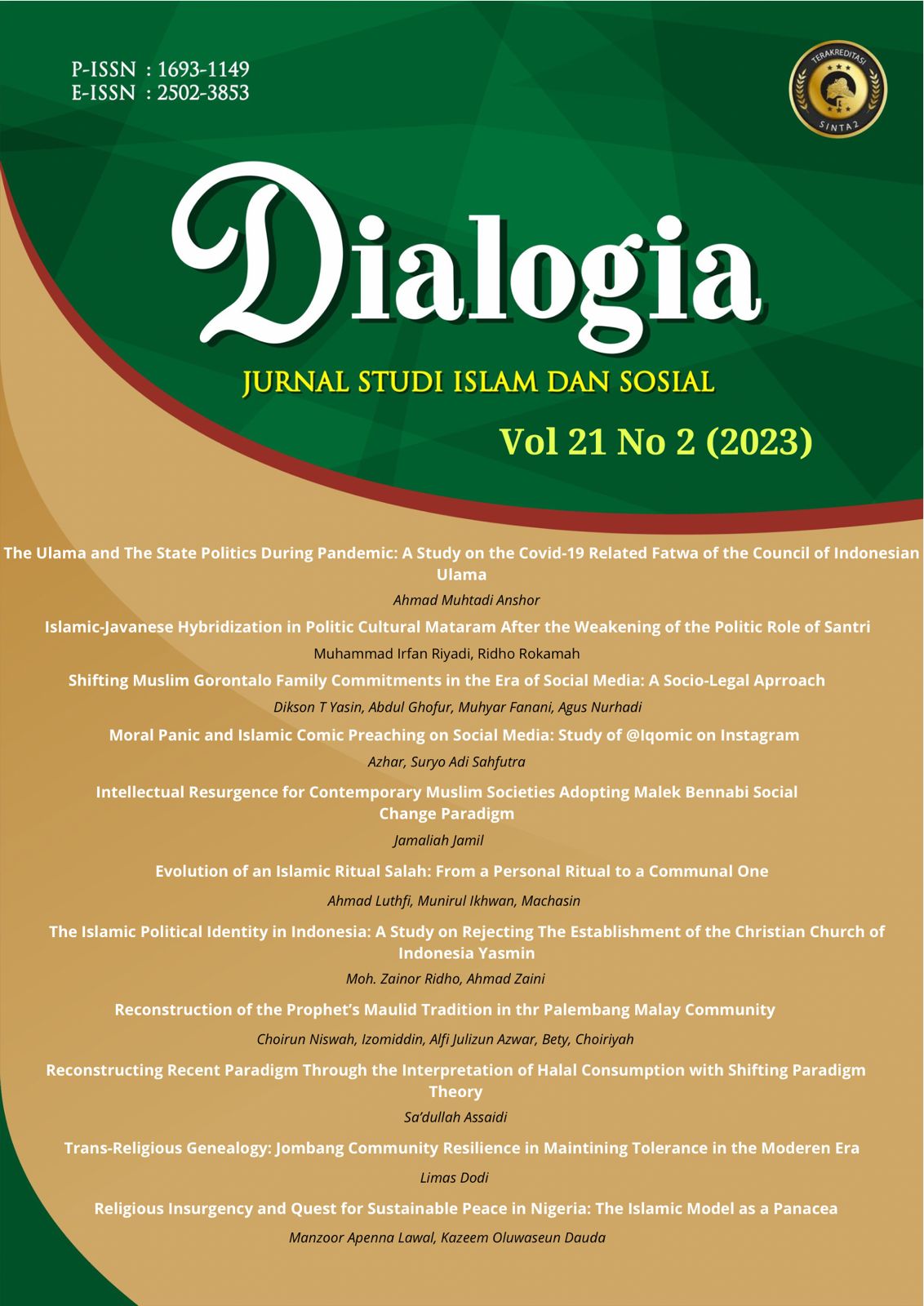Evolution of an Islamic Ritual SalÄh: From a Personal Ritual to a Communal One
DOI:
https://doi.org/10.21154/dialogia.v21i2.7135Keywords:
á¹¢alÄh, Evolution, Personal And Communal Rituals.Abstract
The á¹£alÄh (prayer) command in the Qur'an frequently accompanies zakÄh (alms-giving). Nonetheless, during the Meccan period, the command of á¹£alÄh was often stated separately. This article analyzes the command for á¹£alÄh in the Meccan verses to highlight how this ritual evolved from a personal ritual of the Prophet Muhammad into a communal one. As previous studies have highlighted á¹£alÄh about pre-Islamic rituals known to the first audience of the Qur’an, this article is intended to examine the extent to which á¹£alÄh had evolved following the nubuwwah (prophethood) paradigm of the Prophet Muhammad, which was initially intended to be more personal and vertical, into risÄlah (apostolate), which was more public and horizontal. By analyzing the Meccan verses about the command for prayer in the context of the chronology of revelation, this article argues that prayer in the Qur’an evolved from the private ritual practice of the Prophet Muhammad into a communal one through the prophetic justification of the rituals of earlier prophets and their followers. This evolution went hand in hand with the nubuwwah paradigm, namely the claim that the Prophet Muhammad was able to communicate with the metaphysical realm, on the one hand, and the risÄlah paradigm, i.e., his claim about the mission of conveying this metaphysical information to his people, on the other.







